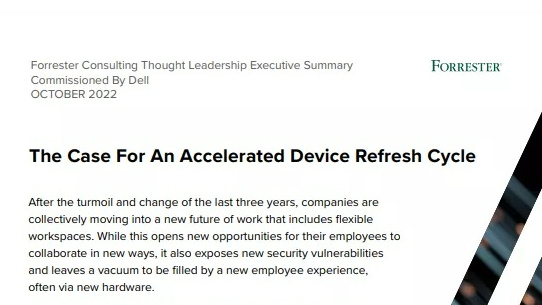The collaboration situation
Business is evolving - and if you’re not collaborating, you’re stagnating


Collaboration has always been a part of business to some extent, but it's only in the last few years that technological and cultural changes have combined to make collaboration one of the most important industry trends around.
In a 2015 survey by Dimensional Research, more than 90% of knowledge workers described collaboration as important to their professional responsibilities, with more than half describing it as critically important'.
Part of the reason this trend is so vital is that the umbrella of collaboration' encompasses a wide variety of different things; it's partly the addition of new tools and capabilities, but it's also about changes to process and approach, and both elements are wrapped up in the cultural changes within the organisation that can allow collaboration to take root.
Rather than operating in separate, self-contained silos, different teams and departments are now increasingly working together, co-operating to solve problems, drive efficiencies and create new products. Furthermore, the way in which this co-operation happens is also changing. Instead of relying on long email chains, perpetual drawn-out meetings and rigid practises, new technologies and working styles have been adopted to enable more collaboration.
"Enterprise collaboration technologies are an important part of enabling the digital business," according to analyst house Forrester's Q4 2016 report on the state of the enterprise collaboration business. "They allow businesses to share information, locate experts, coordinate projects, discuss best practices, and build communities within and across the enterprise. Forward-thinking AD&D [application design and development] professionals use collaboration strategies and tools to drive deeper customer insight and support seamless interactions across the enterprise."
One of the most visible standard-bearers for the new method of working is Slack. With over four million daily active users and counting, the corporate chat and collaboration app has quickly become a fixture within the enterprise community. It's gained particular traction in tech-savvy companies, where early adopters can take advantage of the numerous integrations it boasts with other productivity apps and cloud-based services.
A key benefit for many teams has been faster, more flexible communication compared to more established channels like email. For sports scheduling app Coachseek, one of the main advantages was the fact that it allowed them to consolidate all the communication tools they were previously using, like email, Skype, Facebook and SMS, into one central app.
Get the ITPro daily newsletter
Sign up today and you will receive a free copy of our Future Focus 2025 report - the leading guidance on AI, cybersecurity and other IT challenges as per 700+ senior executives
"In an instant we cut our weekly internal mail from around 600, to just 3 or 4 across the entire team," the company said. "Slack absorbed all our internal communication, our response time to messages was quicker, and generally life was more awesome!"
"The beauty of Slack is that it enables your team to operate in complete transparency. Anybody on your team can pop in or out to keep in the loop. The conversation is shifted from your inbox or phone and into a virtual room centralising everything."
Instant messaging applications such as Slack and Microsoft Teams are predicted to experience substantial growth over the next few years. Indeed, by 2021, the Radicati Group is expecting the amount of desktop of instant messaging accounts to hit more than 8.3 billion. continues to see strong adoption in the workplace due to its immediacy and ease of use.
"Enterprise IM solutions, which offer enterprise-grade functionality and security as well as integration with conferencing and collaboration platforms, are gaining penetration with business organisations of all sizes," the analyst firm said.
New, hyper-mobile devices like lightweight ultraportables and 2-in-1 tablets have also prompted a lot more collaboration within the business. Because they're not weighed down by a bulky machine, so-called corridor warriors' are free to actually get up and drop in on people for face-to-face meetings, rather than relying on email. A preponderance of cloud services also means that they have access to all the relevant documents, files and services they need if they choose to leave their computer behind.
However, while technology can be a great incentive to kick-start change within an organisation, it can only be sustained by marrying it with a corresponding cultural change. As companies look to start their digital transformation efforts and pivot to being more agile in their approach, many have looked to Silicon Valley and the so-called startup culture' as a model for how to shape their working environments.
The most obvious example of this is a trend towards open-plan offices, tearing down walls and eliminating cubicles so that employees have more freedom to talk to each other. Many workplaces also now include more ways for employees off blow off steam during the day, like ping-pong tables or hammocks.
While this may seem like unnecessary frivolity or an excuse for staff to goof off during the workday, the overall positive impact can actually be substantial. Not only does it improve staff morale, it also helps break down the idea of rigidly-defined corporate structures and hierarchies - another core tenet of startup culture. Removing the barriers between upper management and more junior staff can foster an atmosphere of trust, and ensure that staff feel heard.
"The act of giving feedback should be open for everyone in the organisation, no matter the seniority," said TransferWise's Jessica Chen Riolfi. "And those who step forward to give feedback should be deeply respected across the organisation for doing so."
"In typical organisations, giving feedback is generally reserved for line managers who aim to make sure their teams stay on track. But a well-functioning feedback culture doesn't need to be so limited - valuable insight can come from anywhere, and moreover, simply knowing that more voices are represented builds trust across the organisation that decisions are made with full consideration of the overall context."
Similarly, many larger businesses have borrowed the Silicon Valley concept of scrums, huddles and stand-ups - informal team meetings that are short but regular. Participants focus on answering three questions: what did they do yesterday, what are they planning to do today, and whether there's anything preventing them from accomplishing these goals. This helps team members to remain focused on the immediate task at hand, as well as ensuring everyone knows what the state of play is.
Cross-industry collaboration is becoming more prevalent, too. Many IT companies have seen the wisdom in partnering on issues like common standards, shared goals and more. In fact, IDC estimates that by 2018, the number of industry collaborative clouds will triple to more than 450.
In addition to more general changes, collaboration-focused development strategies have seen a rapid rise in recent years. This includes approaches like agile development and DevOps, both of which are based on intense collaboration within small teams and rely heavily on newer technological tools.
Collaboration has become one of the fundamental engines that drives modern business, but it takes work to get it right. It's not just about jumping on the latest technological trends; you've got to make sure that your organisation has got a culture than can support and foster collaboration and communication at every level. Put the effort in, though, and you'll find that these new methods of working can pay dividends in ways you might never have expected.
Adam Shepherd has been a technology journalist since 2015, covering everything from cloud storage and security, to smartphones and servers. Over the course of his career, he’s seen the spread of 5G, the growing ubiquity of wireless devices, and the start of the connected revolution. He’s also been to more trade shows and technology conferences than he cares to count.
Adam is an avid follower of the latest hardware innovations, and he is never happier than when tinkering with complex network configurations, or exploring a new Linux distro. He was also previously a co-host on the ITPro Podcast, where he was often found ranting about his love of strange gadgets, his disdain for Windows Mobile, and everything in between.
You can find Adam tweeting about enterprise technology (or more often bad jokes) @AdamShepherUK.
-
 Meta just revived plans to train AI models using European user data
Meta just revived plans to train AI models using European user dataNews Meta has confirmed plans to train AI models using European users’ public content and conversations with its Meta AI chatbot.
By Nicole Kobie
-
 AI is helping bad bots take over the internet
AI is helping bad bots take over the internetNews Automated bot traffic has surpassed human activity for the first time in a decade, according to Imperva
By Bobby Hellard
-
 'Digital hide-and-seek': Workers are wasting hundreds of hours a year sourcing the information they need to carry out their role
'Digital hide-and-seek': Workers are wasting hundreds of hours a year sourcing the information they need to carry out their roleNews Knowledge workers globally are wasting a quarter of their working week tracking down information, new research from Atlassian has revealed.
By George Fitzmaurice
-
 Untethered: How CIOs and CISOs are paving the way for the new hybrid workforce
Untethered: How CIOs and CISOs are paving the way for the new hybrid workforceWhitepaper Effective techniques to transition from exposed legacy infrastructure to an effective zero trust strategy
By ITPro
-
 Unlocking the power of your digital services
Unlocking the power of your digital servicesSponsored Businesses have invested significant cash into technology since COVID-19, but are they really getting their money's worth?
By ITPro
-
 Delivering fast and secure digital experiences for the modern hybrid workforce
Delivering fast and secure digital experiences for the modern hybrid workforceWhitepaper A new approach to digital experience monitoring that can monitor the health of all systems
By ITPro
-
 Collaboration is the glue that holds your business together
Collaboration is the glue that holds your business togetherSPONSORED A combination of productivity tools and cloud telephony can enable the best from your workforce
By ITPro
-
 The future of work and the forgotten workforce
The future of work and the forgotten workforcewhitepaper How to deploy a mobile-first strategy so no one gets left behind
By ITPro
-
 The case for an accelerated device refresh cycle
The case for an accelerated device refresh cycleWhitepaper Achieving a more cost-effective device lifecycle overall
By ITPro
-
 Employees are choosing how they work
Employees are choosing how they workWhitepaper And with the right secure digital strategy, this could be a great thing for your business: today and far into the future
By ITPro